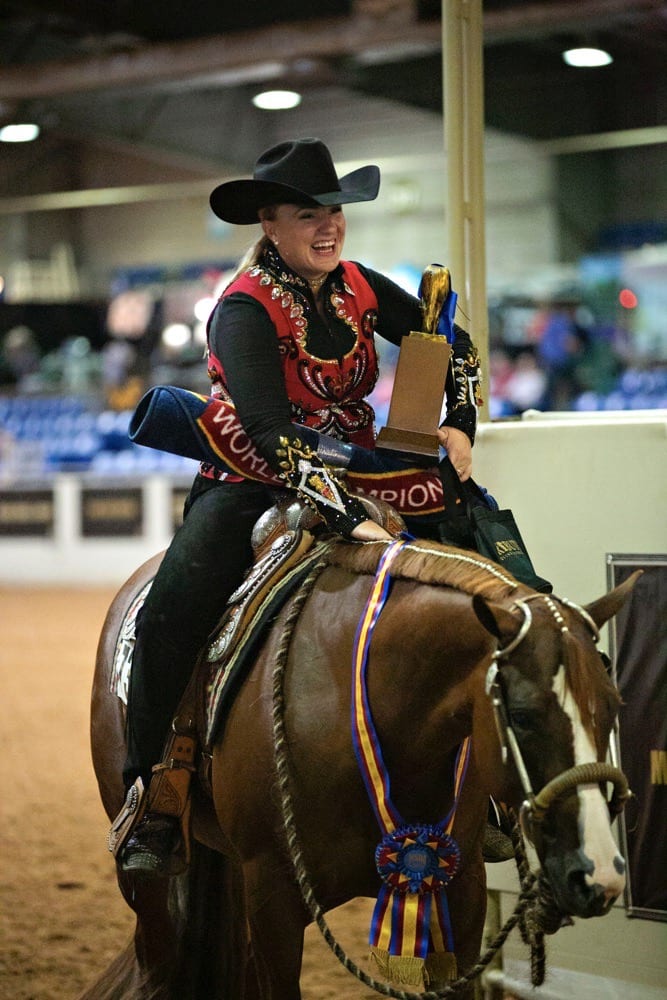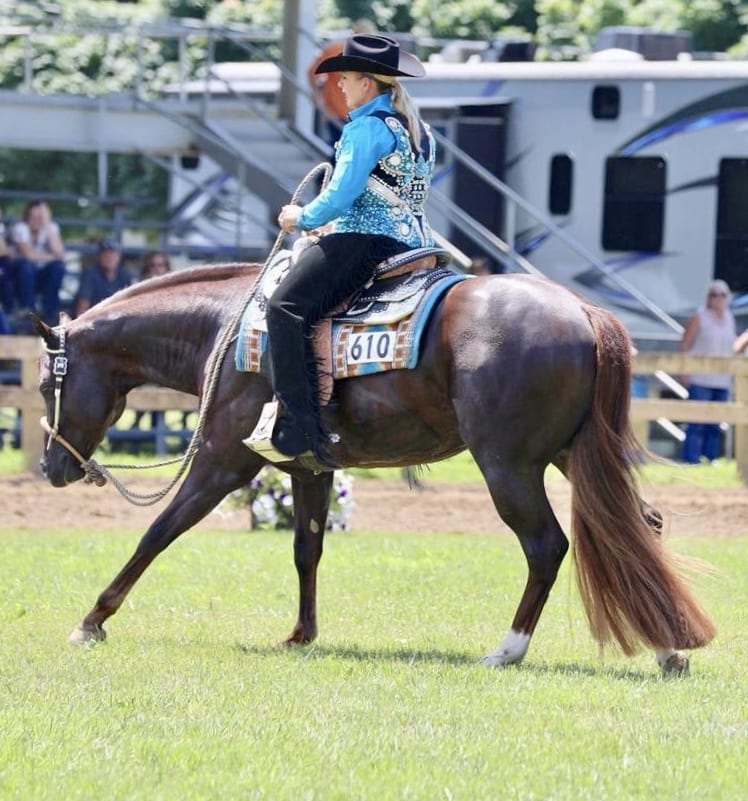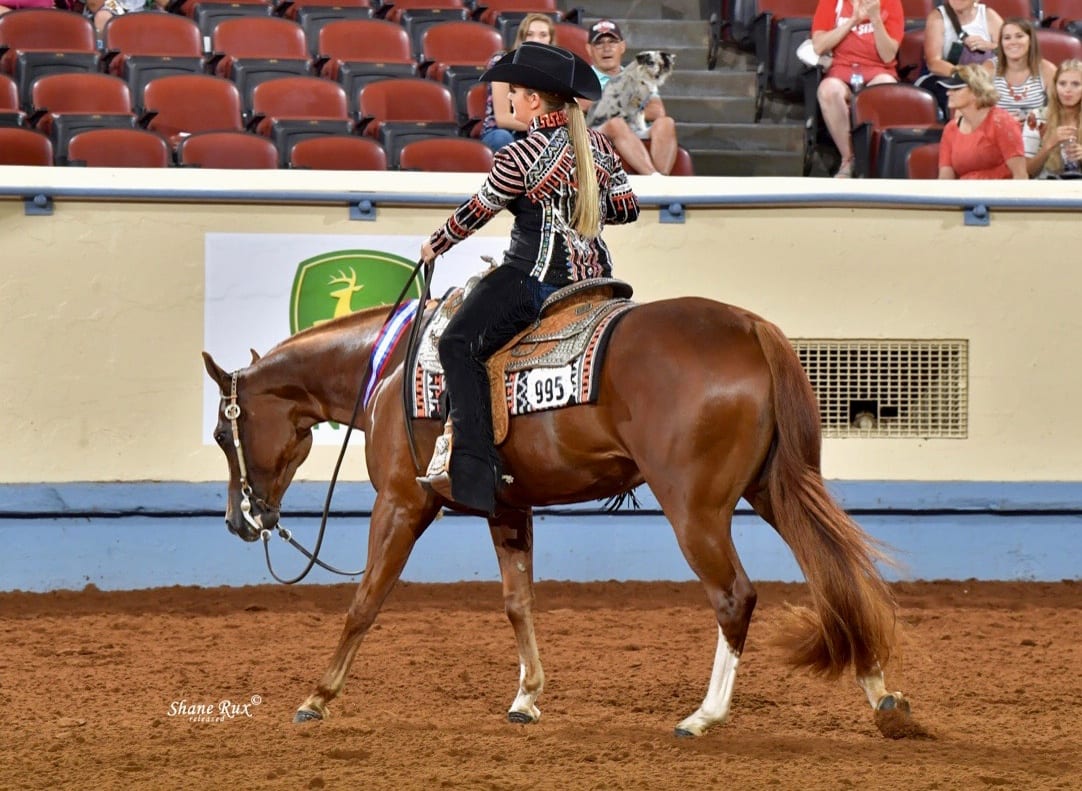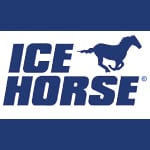The pleasure horse industry has a language all its own, and conversations regarding a horse’s “topline” are commonplace. But when a trainer or judge discusses a horse’s “topline,” what are they referring to?
Specifically, a “topline” can reference a horse’s conformation. For example, is the horse even across the back? Are they downhill? Swaybacked? The conformational aspect of a topline is primarily affected by the horse’s breeding, feed, and exercise. Additionally, a “topline” can refer to a horse’s frame while moving around the arena in a pleasure class.
We spoke to veteran futurity trainers Katy Jo Zuidema and Brian Baker to understand how riders can work to improve their horses’ toplines and frames naturally.
Feed Program: Both Brian Baker and Katy Jo Zuidema acknowledged the importance of a quality feed program to ensure your horse has the right nutritional balance between doing its job and building muscle. Baker said that a diet, balanced with roughage and protein, is necessary to fuel proper muscle development.
 Zuidema admits she and her husband Tim are more “old school” from a feed perspective. She says they feed their horses free choice, high-quality alfalfa hay, and crimped oats.
Zuidema admits she and her husband Tim are more “old school” from a feed perspective. She says they feed their horses free choice, high-quality alfalfa hay, and crimped oats.
Be sure to consult your veterinarian if your horse is consistently struggling to add proper weight to its topline as it may be suffering from a dental or digestive issue.
Exercise Program: A quality feed program will provide the fuel necessary to build the muscle and weight at the horse’s topline. That said, a quality exercise program is an essential element to seeing accurate results, both from a conformational and movement standpoint.
Extension, Extension, Extension – According to Baker, one of the best ways to build muscles along the back is to ask your horse to extend their gaits and then lift with their ribcage. One way he recommends you do this is by swinging your horse’s head side-to-side (gently) while they move out at both the canter and the trot. This will cause your horse to use the core of its body to balance instead of bracing off its face.
 Core Exercise – Brian emphasizes, “A horse’s topline is truly their core. By strengthening their core, you can allow the horse to perform pleasure gaits more easily. His suggestion to swing your horse’s head side-to-side, while working them, is akin to a human doing side-to-side crunches to strengthen the central core and supporting oblique muscles.
Core Exercise – Brian emphasizes, “A horse’s topline is truly their core. By strengthening their core, you can allow the horse to perform pleasure gaits more easily. His suggestion to swing your horse’s head side-to-side, while working them, is akin to a human doing side-to-side crunches to strengthen the central core and supporting oblique muscles.
Balance – Zuidema agrees with Brian. She says it is essential, particularly at the lope, to find a good rhythm and then move the horse’s head around so that they stop balancing so much off their face and neck. She noted that one of the most significant issues she sees of late is that, “There has been so much emphasis on the push from the horse’s hock, that people forget about the horse in front of their saddle.”
 She means that the hock is a part of the whole horse and, where we exaggerate one area, another area will respond to compensate and help the horse balance. Most horses with an exaggerated hock at the lope will have to “hop” or “hiccup” with the front end to continue moving slowly while the back end drives forward. Teaching a horse to balance its core will help them “hold the ground” and reduce the hiccup effect.
She means that the hock is a part of the whole horse and, where we exaggerate one area, another area will respond to compensate and help the horse balance. Most horses with an exaggerated hock at the lope will have to “hop” or “hiccup” with the front end to continue moving slowly while the back end drives forward. Teaching a horse to balance its core will help them “hold the ground” and reduce the hiccup effect.
Face Value – Katy Jo highly recommends working your horse’s face and moving their neck around, so they remain soft through the front end. She says, “If your horse can move its hind end independent of its neck, it will become stronger over the back and hold a better frame.”
Ways to teach the horse to move their hind and front ends independently include: loping and trotting squares and performing bends and counter bends at the lope and extended trot. She recommends working on counter-cantering and not pushing the hip over as far when loping.
According to Zuidema, instead of pushing the horse’s outside leg too far beneath them, allow the horse to lope in a softer “c” shape where the hind end and front end are more balanced so the back can lift evenly, making the overall frame more correct and prettier to the eye.
 Individual Program – Perhaps the key to improving your horse’s topline and overall frame on the rail is remembering that your horse is an individual and may not be physically capable of doing what the other horses are doing.
Individual Program – Perhaps the key to improving your horse’s topline and overall frame on the rail is remembering that your horse is an individual and may not be physically capable of doing what the other horses are doing.
“If you have a B+ horse and are trying to push it to perform an A+ gait, you will get a C+ performance,” Katy Jo cautioned. She likens this to trying to make Steph Curry play basketball like LeBron James.
Indeed, if Steph tried to play like LeBron, he likely wouldn’t have a successful career. Horses are the same in that you need to emphasize their natural strengths. Zuidema says it’s okay if your horse doesn’t have a monster hock. Just become comfortable allowing them to move smaller because, “the more you manipulate the hind end, the more the front end needs to compensate for balance.”
 By the same token, if your horse has a lot of hock, become comfortable with a more forward gait to prevent the “hiccupping” for the sake of moving more slowly, but less correctly.
By the same token, if your horse has a lot of hock, become comfortable with a more forward gait to prevent the “hiccupping” for the sake of moving more slowly, but less correctly.
Ultimately, Katy Jo reminds us, “Make sure your horse is using itself (pushing off the ground); make sure it’s holding its shape; and make sure it’s doing a gait it’s capable of performing on a draped rein around the arena easily.”
Let your horse find their balance, work to move its parts independently, and soften its face and neck – this will allow the horse to not only build a strong core, but hold a pretty frame, even when its natural gait is not exceptional.









